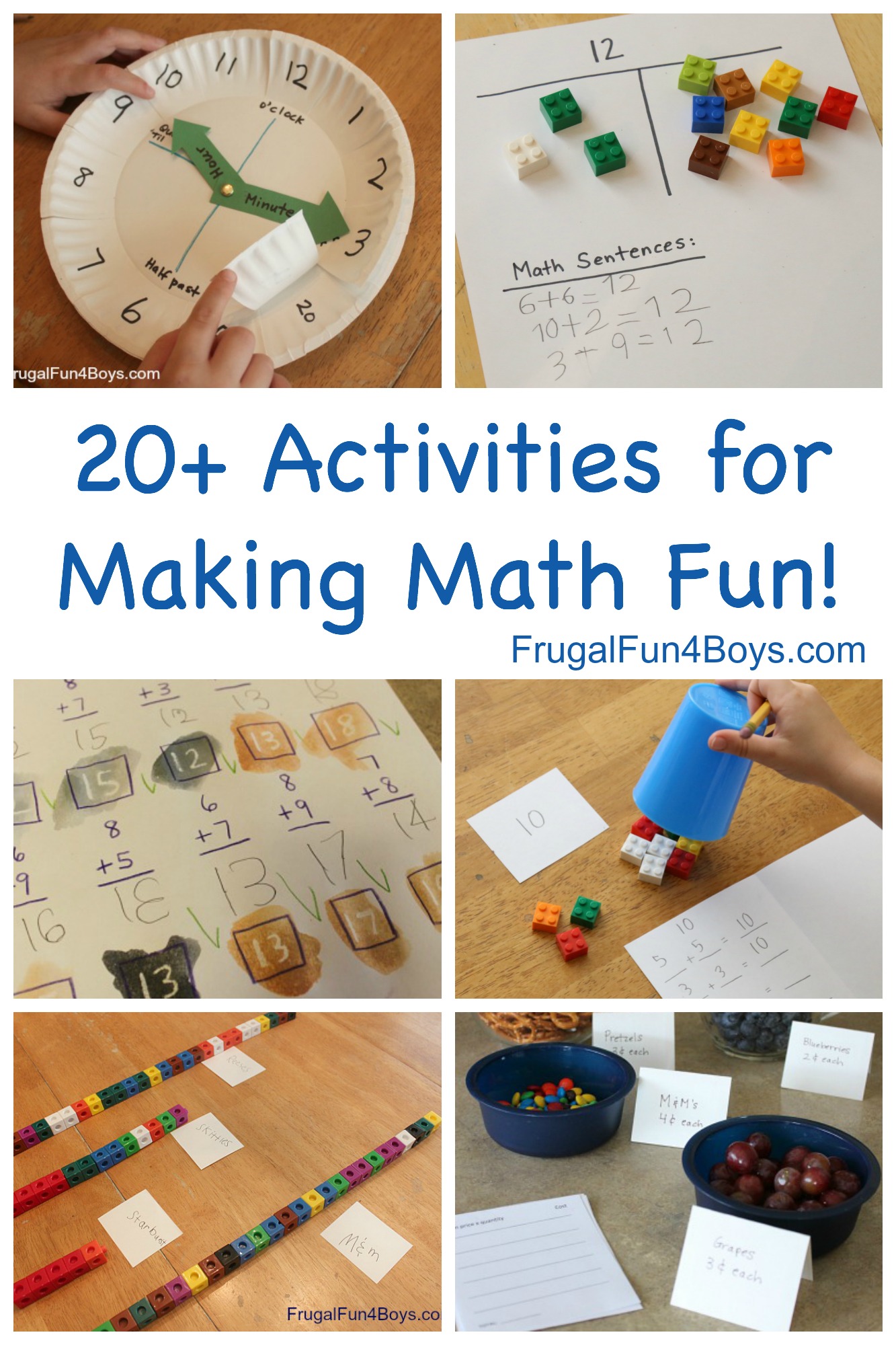How to Make Math Fun for Elementary Students
How to Make Math Fun for Elementary Students is a crucial question for educators and parents. The love for mathematics is a critical skill for students in the present and future. Mathematics is the language of science, technology, engineering, and mathematics. Enthusiasm in mathematics is crucial for students to develop future success and a passion for mathematics. This article explores innovative ways to foster an appreciation for math in elementary students, addressing the challenges of making this subject appealing and accessible. This guide covers essential strategies that encourage active participation and transform the classroom experience. By applying these effective teaching methods, teachers can effectively enhance learning outcomes and inspire students to engage with mathematical concepts. We will explore diverse methods of making math enjoyable, from hands-on activities to interactive games. Throughout this guide, we will identify the issues associated with making math interesting and present practical solutions to make math fun. This comprehensive guide outlines a step-by-step approach to achieving this goal, encompassing various techniques such as games, real-world applications, and interactive lessons.
Creating a Positive Learning Environment
Fostering a Growth Mindset
Encouraging a positive learning environment is paramount. Students should feel comfortable taking risks and making mistakes without fear of judgment. Educators can promote a growth mindset by emphasizing that intelligence and abilities can be developed through effort and perseverance. This approach shifts the focus from innate talent to the power of hard work and learning from errors. Celebrate small victories and acknowledge the effort put into learning. Students should understand that setbacks are opportunities for growth and improvement. A classroom culture where curiosity is embraced, and questions are encouraged, creates a fertile ground for learning.
Building Relationships and Trust
Strong teacher-student relationships are crucial for a positive classroom environment. Establishing trust enables students to feel safe and supported, fostering a willingness to engage in learning. Teachers can create this environment by actively listening to students’ thoughts, concerns, and ideas. Respectful interactions create a positive environment where students feel comfortable sharing their understanding of a concept. Creating a safe and welcoming space makes math feel less intimidating and more approachable, increasing engagement.
Making Learning Fun
Implementing hands-on activities and real-world applications makes learning engaging and stimulating. Using examples from everyday life helps solidify understanding of mathematical concepts and promotes comprehension. Connect the abstract concepts of math to real-life situations, such as budgeting, measuring, or geometry in architecture.
Utilizing Engaging Math Activities
Incorporating Games and Puzzles
Engaging math games and puzzles are excellent tools for enhancing elementary students’ understanding of math concepts. For example, using board games and card games to learn addition and subtraction, or creating and solving mathematical riddles to promote problem-solving skills. Interactive games make abstract concepts concrete and help students develop computational fluency in a fun and playful setting. This approach fosters creativity and critical thinking. Games can also help students understand challenging problems in a playful environment. Games help to make math seem approachable and stimulating, thus encouraging engagement.
Hands-on Activities and Manipulatives
Hands-on activities and manipulatives are essential tools for visualizing abstract concepts. Using objects like blocks, counters, and measuring tools allows students to physically interact with mathematical ideas, providing a concrete representation of abstract concepts. For instance, using blocks to understand fractions or using measuring tools to explore geometry concepts. This tactile approach creates a more intuitive understanding of the material and fosters a deeper comprehension of various mathematical concepts.
Applying Math to Real-World Scenarios
Real-world connections make math relevant and practical. Applying mathematical concepts to real-life scenarios, such as calculating discounts, measuring ingredients in cooking, or understanding timetables, helps students connect abstract concepts with their everyday lives. Encourage students to find math in their daily experiences to reinforce their learning.
Employing Technology for Enhanced Learning
Interactive Math Software and Apps
Interactive math software and apps provide engaging ways for students to practice and apply their learning. These tools offer personalized learning experiences, adapting to individual student needs and providing customized feedback. Students can learn at their own pace and explore concepts in a dynamic and engaging way. Educational games and simulations offer interactive platforms for practicing mathematical skills in a fun and enjoyable manner.
Educational Videos and Animations
Engaging videos and animations can illustrate mathematical concepts in a visually appealing way. These resources provide alternative approaches to learning, catering to various learning styles. Visual aids can help make complex mathematical ideas more comprehensible. Explaining abstract concepts in different ways provides alternative perspectives and fosters a deeper understanding.
Encouraging Collaboration and Communication
Group Activities and Discussions
Encouraging group work fosters collaboration and communication skills. Students can work together to solve problems, share ideas, and learn from each other’s approaches to a problem. Group discussions give students a platform to articulate their understanding and explain their mathematical reasoning. This dynamic interaction between peers enriches their learning experience.
Presentations and Sharing of Solutions
Encourage presentations and sharing of solutions to problems, promoting communication skills and confidence. Students gain valuable experience in conveying complex ideas clearly. Presenting and explaining different approaches to problems fosters critical thinking and creative problem-solving skills. This approach also empowers students to articulate their mathematical reasoning and gain confidence in their problem-solving abilities.
Differentiating Instruction to Meet Individual Needs
Adapting to Diverse Learning Styles
Differentiating instruction to meet individual needs is critical for creating an inclusive learning environment. Teachers can adapt lessons to accommodate different learning styles, ensuring that all students have opportunities to succeed. Tailoring instruction to various learning styles allows students to connect with mathematical concepts in ways that resonate with their individual strengths.
Assessing and Monitoring Student Progress
Using Varied Assessment Methods
Using varied assessment methods provides a comprehensive understanding of student progress. Including both formative and summative assessments is crucial. Formative assessments gauge understanding throughout the learning process, enabling teachers to adjust their teaching methods accordingly, while summative assessments provide an overall measure of student mastery of concepts. This comprehensive evaluation promotes a proactive approach to teaching, allowing for targeted interventions and personalized support.
Engaging Parents in the Learning Process
Communicating with Parents
Actively communicating with parents about their child’s mathematical development and progress is crucial. Parents can supplement and reinforce learning at home. Providing clear explanations of mathematical concepts to parents can help them feel empowered to support their children’s understanding and growth. Regular communication keeps parents informed about their child’s progress, facilitating collaborative support.
Integrating Technology Effectively
Utilizing Educational Software
Utilizing appropriate educational software can significantly enhance math instruction and create fun and immersive learning experiences. These tools can offer interactive lessons, games, and exercises, making learning more engaging and interactive for elementary students. By integrating technology, teachers can cater to different learning styles, fostering engagement and boosting understanding.
Employing Visual Aids and Real-world Connections
Making Abstract Concepts Concrete
Visual aids, such as diagrams, charts, and models, make abstract math concepts more concrete and easier to grasp. Students can visualize problem scenarios, strengthening their understanding of mathematical ideas. This approach helps in building a concrete understanding of abstract concepts. Connecting these concepts to real-world scenarios makes the subject more practical and relatable.
Promoting Practical Applications
Encourage students to apply mathematical concepts to real-life scenarios, reinforcing their understanding. For instance, measuring ingredients in cooking or creating budget models. These practical applications of math make learning more meaningful and enhance engagement. Using real-world examples makes learning relevant and relatable, encouraging students to see the value of math in their everyday lives. This practice promotes a better understanding of abstract concepts by using tangible and practical demonstrations. These approaches translate abstract ideas into concrete demonstrations and ensure a solid foundation for grasping the subject’s essence. Using real-world examples fosters a greater understanding and appreciation for the subject, making it a more valuable and relevant learning experience for all students involved. These examples demonstrate how to integrate practical applications that solidify comprehension. This will ensure that math lessons are not theoretical but instead build a practical and applicable understanding of math concepts for students. Connecting math to real-world scenarios reinforces students’ comprehension and encourages greater engagement with the subject matter, providing a more well-rounded and practical perspective. By actively engaging with the examples, students establish a strong foundation for long-term math learning. These efforts will inspire students to explore the broader implications of mathematical concepts. Examples are presented to encourage the application of mathematical theories and strengthen students’ ability to engage with the subject in a more concrete and comprehensible manner. Examples will further illustrate and support these methods, ensuring clear and relevant examples that promote practical understanding of mathematical concepts. These demonstrations will enhance student interaction and engagement with math.
In conclusion, making math fun for elementary students is not just about making learning enjoyable; it’s about fostering a love for mathematics and developing crucial problem-solving skills. By incorporating engaging activities, real-world applications, and interactive learning methods into the curriculum, educators can create a positive and supportive learning environment. Encourage parents to get involved in making math fun, too. By implementing these strategies, educators can empower elementary students to embrace math with confidence and enthusiasm. This will lay the foundation for future mathematical success and a lifelong appreciation for the subject.
Share this content:




Post Comment